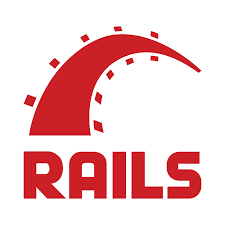It might be difficult to sort out what programming language and framework is the best fit for your next app. The tech market rapidly evolves and, therefore, programming tendencies frequently change. Opinions also vary. Some developers say that Ruby on Rails is becoming the thing of the past. Others claim that Node.js isn’t suitable for heavy computing apps and insist on using Ruby instead. Thus, to understand who is right and make a just decision, you will need to conduct deep research.
We’ve done a part of it for you. In this overview, we will discuss the history, strengths and weaknesses, popularity, and other aspects of .NET Core, Node.js, and RoR frameworks. Why them? .NET Core, Node.js, and RoR are commonly used for app development, which continues gaining traction now.
That’s why, if you are about to start the application development process, read the .NET Core, Node.js, and RoR comparison to learn:
- How it Started: Dot NET Core framework, Node.js, and Ruby on Rails frameworks
- When to use Dot NET Core, Node.js, and RoR for app development?
- License, community, and learning curve of .NET Core, Node.js, and RoR frameworks
How It Started: Dot NET Core Framework, Node.js, and Ruby on Rails Frameworks
Let’s go step by step and start with a brief history. The things that inspired tech gurus to create Dotnet Core, Node.js, and Ruby on Rails back then should help you understand the philosophy behind these technologies.
.NET Core

.NET Core was initially released in June 2016 as a cloud-friendly, open-source, cross-platform alternative to .NET framework. This project was launched by Microsoft to enable software engineers to create products on Linux and macOS and make them less dependent on the Windows family. The cross-platform capabilities gave tech companies extra flexibility in terms of development and turned .NET Core into the core technology used for .NET projects.
Node.js

Released in 2009 Node.js was created as an alternative to Apache HTTP Server that couldn’t handle a large volume of concurrent connections. Ryan Dahl launched this cross-platform, open-source, JavaScript runtime environment for macOS and Linux. Since Node.js is JavaScript-based, it can be used both for backend and frontend development.
Note. Unlike .NET Core and Ruby on Rails, Node.js is not a framework. Although many tech specialists believe that a JS runtime environment shouldn’t be put in the same line with frameworks, in some cases, it’s an optimum choice for application development. For instance, .NET Core is one of the best options to create real-time and data-intensive apps.
Ruby on Rails

David Heinemeier Hansson created RoR while working on the project management tool called Basecamp. He extracted the framework and released it as open-source in 2004. Since then RoR has been used for the majority of Ruby projects thanks to its flexibility, readability, and the optimized SDLC. RoR is a model-view-controller framework that rests upon the renowned software development patterns, “convention over configuration” (CoC), and “don’t repeat yourself” (DRY) principles.
When to Use Dot NET Core, Node.js, and RoR for App Development
If you plan to start application development but don’t know what framework to favor, analyze its advantages and disadvantages. There is no universal solution that can cover all the development needs and serve as a basis for each and every application. In some cases, Ruby software development is more appropriate than DotNet Core. You just need to know when. Here are the main capabilities of all the analyzed frameworks to guide you.
.NET Core
With this cross-platform and portable framework, you can build applications that run equally smoothly on Windows, Linux, and macOS. Whereas Node.js can be used with all Javascript-compatible languages, .NET Core is suitable for .NET projects only. This is one of the key differences between .NET Core and Node.js that may affect your choice of the framework.
Apart from that, .NET Core supports a wide range of application types, so you can scale an existing project pioneering new domains. For example, you can first leverage .NET Core to build a desktop solution and later rely on the same technology to develop a mobile, gaming, or IoT product. Besides, since this framework is based on .NET, back-end .NET Core developers can avoid using JavaScript or learning new languages to complete a project.
.NET Core also makes the software more secure. This framework offers reliable mechanisms for user authorization, authentication, data protection, and attack prevention. ASP.NET Core Identity enables software engineers to integrate an app with all key authentication providers.
Recommended for
Use .NET Core for cross-platform apps that are likely to scale in the future and have high performance. Out of the compared frameworks, this one is obviously a winner in terms of security and reliability. That’s why tech companies often prefer DotNet Core for complex enterprise-level projects based on C# as the main language. If you want to explore the possibilities of tailored solutions using this technology, check out our guide on custom .NET application development.
Not recommended for
.NET Core doesn’t support all libraries, Windows Forms, and WPF applications. Make sure to check the compatibility of .NET Core before including it into your tech stack.
Have got an app idea to implement? Contact us to discuss your software development needs and requirements.
Node.js
This runtime environment is a full-stack JavaScript solution for both client- and server-side applications. Therefore, Node.js developers can write the whole web application in JavaScript. This enables Node.js developers to create full-stack apps independently, whereas tech companies can save on hiring several people for different tasks.
Node.js framework supports high-speed asynchronous coding and is based on Google’s V8, which is one of the fastest engines. This makes Node.js faster than Ruby on Rails, for example. The support of non-blocking operations I/O operations additionally increases the speed of code execution.
Recommended for
Node.js is a perfect match for real-time and streaming applications like YouTube and e-commerce stores. It is also scalable enough to allow you to withstand an increasing load in case the application rapidly starts growing.
Not recommended for
Think twice before using Node.js for large applications requiring complex management. .NET Core is a better choice in this case.
Ruby on Rails
RoR has been a trendy framework for many years due to its ease of use and multipurposeness. It supports RubyGems, a package manager that simplifies the distributions of Ruby programs and the installation of gems. This makes RoR a great match for creating applications of simple or medium complexity within the shortest time. It might be less effective for scalable applications with a high load since RoR doesn’t perform as good as .NET Core or Node.js.
Thanks to ready-to-use components, third-party RoR code is usually consistent and clean. It’s also very concise and minimizes repetitive tasks, which cuts the development time and makes the coding process more cost-efficient for Ruby on Rails developers.
Recommended for
Opt for Ruby on Rails if you don’t plan to super scale your app or process crazy volumes of traffic. RoR development is also a great solution for CPU intensive applications that handle lots of images and graphics – Node.js isn’t suitable in this case.
Generally, the Ruby on Rails framework is used for web, mobile, and desktop app development, web, and mobile games, e-commerce, and content management systems.
Not recommended for
Large projects with enormous traffic. In this case, Node.js is preferable. You also shouldn’t use RoR if you hire (or are) an inexperienced developer. Since Ruby On Rails does a large part of coding instead of software engineers, beginner RoR developers are prone to making mistakes which compromise app execution.
The License of .NET Core, Node.js, and RoR Frameworks
Whereas use cases can guide you on what framework to pick, licensing requirements may be crucial for making the final choice. Fortunately, all of the analyzed frameworks are offered under the MIT license. In other words, they boast high license compatibility and allow developers to reuse code.
Hence, regardless of the selected framework, you will be able to enjoy fairly free licensing terms.
Community
To research the community behind each of the frameworks, we’ve analyzed their GitHub repositories. They show how many skilled developers are ready to share their expertise and help you in solving any challenging task should you need assistance. Here’re what we’ve found:
| DotNet GitHub | Node.js GitHub | GitHub Rails | |
|---|---|---|---|
| #Watchersl | 1.4k | 3k | 2.5k |
| #Stars | 14.4k | 73k | 46.4k |
| #Forks | 3.5k | 18k | 18.7k |
| #Contributos | 255 | 2841 | 4280 |
As you can see, Node.js developers and Rubyists are much more active GitHub users than Dot Net Core developers. This means that by choosing one of these technologies you get access to a larger knowledge base.
Learning Curve
Ruby on Rails has a pretty much shallow learning curve for the beginners. Decent official guidelines and an active community would help you through all the stages of learning this framework. But even if it could look like you wake up one morning and become a Ruby on Rails guru, in reality it is not. RoR offers a simple and readable syntax, so developers won’t need a lot of time to figure out how to write code and understand what someone has written a year ago. Though conventions are in the Ruby community for a reason. Making something bigger would require your patience, learning efforts, and being prepared to read docs not only on the Rails website and at some point you will start making projects fast and the way that makes you proud of them.
Similarly to RoR, Node.js is also quite easy to learn, but the application coding process is more complex. That’s why Node.js developers usually need more practice in programming than Ruby on Rails developers before starting a project.
The learning curve of .NET Core is pretty steep. Yet if you have previously worked with the .NET framework, it gets much easier. Besides, if you decide to opt for .NET Core, the learning efforts are very likely to pay off. The applications based on .NET Core have outstanding security and reliability.
Leobit for .NET Core, Node.js, and RoR Development
As a company that provides universal software development services, Leobit hires developers with an all-rounded experience. We specialize in .NET software development, Node.js, Ruby on Rails, and other web and mobile technologies demanded in the modern tech market.
Familiarize yourself with the projects completed by Leobit to find out how different technological stacks are used for application development.
Have got an app idea to implement? Contact us to discuss your software development needs and requirements.













